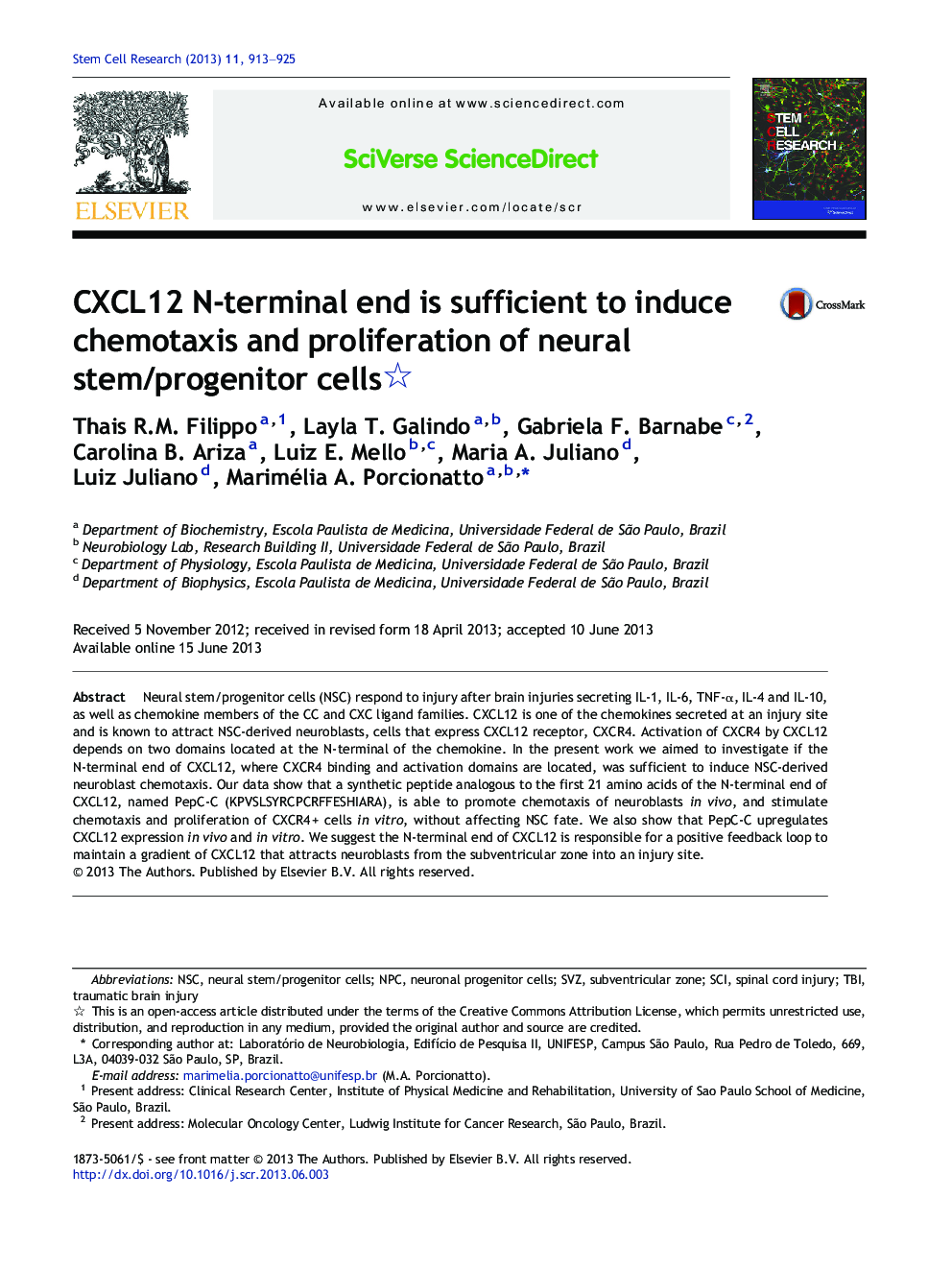| Article ID | Journal | Published Year | Pages | File Type |
|---|---|---|---|---|
| 10891420 | Stem Cell Research | 2013 | 13 Pages |
Abstract
Neural stem/progenitor cells (NSC) respond to injury after brain injuries secreting IL-1, IL-6, TNF-α, IL-4 and IL-10, as well as chemokine members of the CC and CXC ligand families. CXCL12 is one of the chemokines secreted at an injury site and is known to attract NSC-derived neuroblasts, cells that express CXCL12 receptor, CXCR4. Activation of CXCR4 by CXCL12 depends on two domains located at the N-terminal of the chemokine. In the present work we aimed to investigate if the N-terminal end of CXCL12, where CXCR4 binding and activation domains are located, was sufficient to induce NSC-derived neuroblast chemotaxis. Our data show that a synthetic peptide analogous to the first 21 amino acids of the N-terminal end of CXCL12, named PepC-C (KPVSLSYRCPCRFFESHIARA), is able to promote chemotaxis of neuroblasts in vivo, and stimulate chemotaxis and proliferation of CXCR4 + cells in vitro, without affecting NSC fate. We also show that PepC-C upregulates CXCL12 expression in vivo and in vitro. We suggest the N-terminal end of CXCL12 is responsible for a positive feedback loop to maintain a gradient of CXCL12 that attracts neuroblasts from the subventricular zone into an injury site.
Keywords
Related Topics
Life Sciences
Biochemistry, Genetics and Molecular Biology
Biotechnology
Authors
Thais R.M. Filippo, Layla T. Galindo, Gabriela F. Barnabe, Carolina B. Ariza, Luiz E. Mello, Maria A. Juliano, Luiz Juliano, Marimélia A. Porcionatto,
